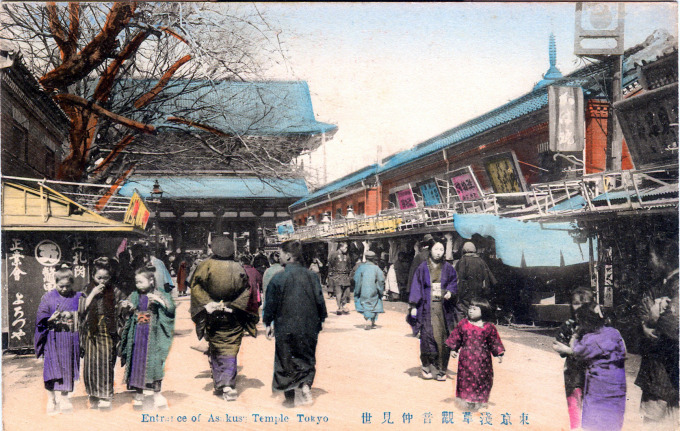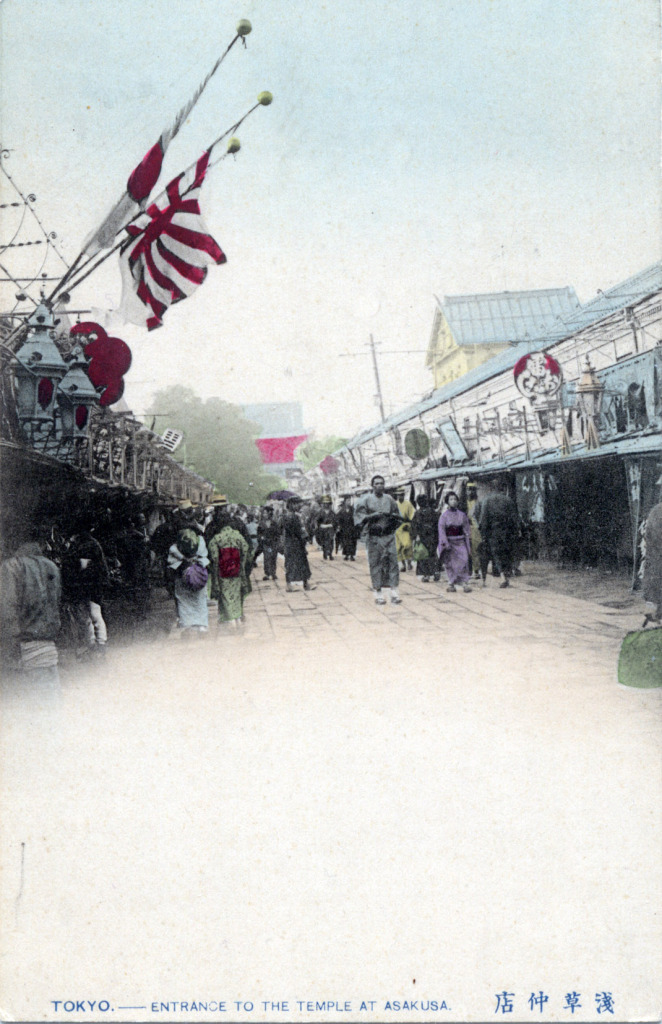“The Nakamise-dōri [Inside-Shops Street] is short merchandise avenue on the approach to the Asakusa Kannon temple, with numerous shops selling everything from tourist trinkets and amulets to omiyage [gift souvenirs] and genuine Edo-style crafts to various foods. It is said to have come about in the early 18th-century when neighbors of the Sensō-ji temple grounds were granted permission to set up shops on the approach to the temple.
“However, in May 1885 the Tokyo government ordered all shop owners to leave. In December of that same year the area was reconstructed in Western-style brick. During the 1923 Great Kantō earthquake many of the shops were destroyed, then rebuilt in 1925 using concrete, with a Momoyama-style, vermilion-lacquered appearance, only to be destroyed again during the bombings of World War II.
“The length of the street is approximately 250 meters and contains around 89 shops.”
– Wikipedia

Nakamise-dori [Street of the Inside Shops], the approach to Asakusa Sensoji, Asakusa, Tokyo, c. 1910.
“… One of my aunt’s favorite pupils was Chieko-san, whose family owned a long-established Nakamise store, which sold various kinds of purses and pouches … She must have been seventeen or eighteen. Her unpainted white, round cheeks were slightly flushed, and her small unrouged lips were bright and red.
With her head lowered slightly, she played the nigenkin [two-stringed zither] intently. The sight was as beautiful as a watercolor print, and I gave a small sigh, mere child as I was. My sister whispered from behind: ‘Everyone talks about her. They call her the ‘Belle of Nakamise’.’
“Her family’s shop displayed purses and tobacco pouches made of iden [sheepskin or deerskin], shobugawa [deerskin with iris dyed on an indigo background], printed cotton, and tozan [a finely woven cotton fabric with a lustrous finish and usually vertical stripes] … As customers passed on Nakamise’s stone pavement, Chieko-san, with a sweet smile and her head slightly tilted to one side, called softly, ‘Please come in and look around.’ Few people passed without stopping. Not a few young men visited her shop every day instead of the Kannon temple. She was literally the shop’s main attraction.”
– My Asakusa: Coming of Age in Pre-War Tokyo, by Sadako Sawamura, 2011



Pingback: Kaminarimon, Asakusa, c. 1910. | Old Tokyo